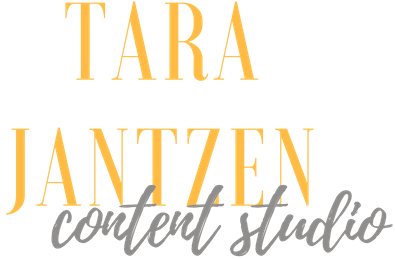Social media has brilliantly expanded the opportunities and reach of brands and businesses. The ability to control and manage your message at point of need is a welcome shift in traditional PR and marketing constraints. Maximizing the right platforms and tools available is now the challenge we face. Perhaps one of the more beneficial social channels for PR activities is mostly perceived to be a recruiting tool – LinkedIn.
According to the 2017 B2B Content Marketing Benchmarks, Budgets, and Trends Report produced by Content Marketing Institute and MarketingProfs, 89% of B2B marketers use LinkedIn to distribute their content. This makes it the most often used, and reportedly the most effective, social platform of choice.
Recent statistics published by LinkedIn indicate they now have exceeded more than 300 million members worldwide. Along with individual profiles and company pages, there is a wealth of professional knowledge being shared which is originating from millions of publishers through tools like Pulse, Influencer posts, and most recently, those millions of members as they rolled out their publishing platform. The volume and usage of both LinkedIn Groups and SlideShare continue to expand. In addition, mobile access now accounts for more than 50 percent of their global traffic.
So what does all this mean for PR departments? It means if you haven’t already, it might be time to consider integrating LinkedIn into your PR strategy. And here’s how.
COMPANY PAGES
It goes without saying that first and foremost all organizations need to establish a company page on LinkedIn. Not only does this offer the opportunity to clearly define your business and drive traffic back to your own website, but it also provides the unified anchor for all of your employees to link to from their individual profiles. This builds an instant community with your company page at the top.
Your employees want to be proud of where they work. For both your employees as well as your customers, it’s important to take great care and thought in what your company profile looks like, says about you, and gets shared with key audiences.
Start with a solid description of your business. It should be consistent with your website, and it should be clear and concise. Provide the appropriate URL, company size, industry and service, and any other pertinent information that helps define who you are. If a media outlet or reporter views your company page, it should be crystal clear what your business does and who you serve.
Next, be sure to include high quality, high-resolution cover and logo photos on your page. Having low quality, fuzzy, or inappropriately sized images says a lot about your brand – make the best first impression.
Current image dimensions are as follows:
- Standard logo 100×60
- Square logo 50×50
- Banner or cover image 646×220
- Shared image size limit 100MB
Once your company page is complete and published, you can begin sharing content updates about your business or industry on a regular basis. This shouldn’t be an opportunity to share anything and everything, so be strategic about what makes the most sense for this audience and channel.
Don’t forget to post your open positions. The number of job posts and type can spotlight business growth, bring greater clarity to the type of work you do, and can build and expand your community.
SHOWCASE PAGES
These pages are child pages of your company profile. They provide the perfect opportunity to share specific aspects of your business that have a long shelf life. In other words, these should not be used for campaigns or short-term events, but rather for products and services, research centers, business units, or other branches within your business that will be around for a long time.
Showcase Pages allow you to narrow visibility to a distinct area and may give reporters and media outlets a unique slice into something that could get buried on your traditional website. Leverage these to promote and increase brand awareness and to build a unique follower community to this subset of your business.
SUBJECT MATTER EXPERTS (SMEs)
As you select the core SMEs within your organization aligned to strategic business goals, ensure those SMEs have optimized their own professional profiles on LinkedIn. Always remember, when you’ve pitched a SME to a reporter, they tend to go to LinkedIn first to find out more about whom they are about to interview. Make it as rich and robust as appropriate.
- If the SME doesn’t already have a professional headshot, work with them to get one. You want them representing your business, so ensure it has a consistent look and feel to other key executives in your company. Don’t let them use an informal picture of them driving their new car, or holding their cat. Save those more personal photos for Facebook and invest in quality images for your experts as they’ll be used again and again in multiple places. Remind them this is a direct reflection of their personal brand – time to up their game.
- Review how they describe themselves and the work they do. See if there is an opportunity to align messaging with company descriptions showing more cohesion. Or if they aren’t saying enough, work with them to enhance and elaborate further so it represents how you are pitching them and their expertise with the media and event speaking opportunities.
- Also, ensure they are hyperlinking to the right company page – with larger organizations that have multiple branches, this can get confusing. If they need to represent one of your Showcase Pages as well, ensure it’s in the right location and visible, but they should still include the company page as the primary.
- Work with them to link to any thought leadership they have authored and published, any past media interviews they have done, or any upcoming events where they may be speaking or presenting. You want to have the right collection of content that represents who they are, what they’ve done, and what they can speak to easily accessible from that profile.
All of these are pieces of information that a journalist will find useful as they seek an expert to use for upcoming media opportunities, or that event committees will use to select the best presenters, so optimize professional profiles as much as possible.
GROUPS
The launching of company managed groups as well as active participation in other outside groups is a great way to showcase the expertise of your business as well as your employees and to build community.
Groups can be a fantastic way to engage directly with key audiences outside of the typical day-to-day interactions. In this process, you can gather new data and information you wouldn’t have received elsewhere, and leverage that to drive new content development, drive new sales leads, and even collect and respond to general brand feedback.
The trick is to keep these actively managed, targeted, and interesting. You want to keep a pulse on what’s on the minds of your audience, understand how that plays into your own business, and then establish content and experts who can quickly participate in the conversation. Be sure your key experts are participating in groups and that they share the necessary information with the PR team so you can team on the right strategic response.
PUBLISHING
LinkedIn introduced the publishing capability to key influencers, and then expanded it to all users last year. The entrance of a new set of authors to the long-form publishing tool has created a single and distinctive platform with a target audience of critical mass that most bloggers would kill for. Here is a great overview of how to create long-form posts for LinkedIn Publishing. Use this feature wisely.
As part of your larger PR and content strategy, identify strategic posts that should be published by core SMEs in your organization. The content you publish to LinkedIn should be unique in that the same post is not already on a company blog – it’s considered a no-no and will also cause significant SEO problems with tools like Google search.
Your content strategy should already identify key or critical areas in your business that need the most visibility this year and when. Work with the top SMEs in crafting the right content timed for optimal visibility. Feel free to link back to other content on your blog or website, but have a fresh perspective or unique insight on your LinkedIn post. Remember, the captive audience you have is likely much greater than what you have elsewhere – leverage the best to engage the most.
For more on how the distribution process of long-form posts works, read this LinkedIn help section. This might aid your decision about which content will work best based on business and customer needs.
For tips on what works well in terms of style and formatting, check out this article which provides top secrets for writing well on LinkedIn.
SLIDESHARE
I mentioned the SlideShare tool above, but let me elaborate a bit further.
In early 2012, LinkedIn acquired the presentation-sharing platform, SlideShare. Along with its ability to share and showcase PowerPoint presentations, you can also share videos, infographics, and other documents too.
SlideShare allows users to embed presentations into websites, blogs, as well as a LinkedIn profile or post. It’s another great way to bring more visual content into your LinkedIn content mix. It also does a nice job with SEO optimization, provides its own analytics, and lends another opportunity to reuse and repurpose content.
Use SlideShare on your company pages to highlight key services and offerings, to educate your audience on a complex topic, to narrate insight and knowledge from a key expert, to launch a critical product or service, or to bring a more dynamic view of what it’s like to work within your company.
When it comes to your PR strategy, be sure your core experts have a few branded and company-approved SlideShare decks on their professional profiles so a media outlet will know what they specialize in and how they might use them for an upcoming opportunity.
Use SlideShare to give greater insight into how your business has approached a hot trend or challenging business issue, and provide some great case study highlights along with it. This is exactly the sort of information that brings greater brand visibility, reinforces your businesses ability to do high impact work, and can lead to increased sales as well as media placements.
These are just some of the ways to take advantage of the current capabilities within LinkedIn as you build your PR strategy. As the platform grows and further innovates, I imagine they’ll be even more to leverage. Stay ahead of the game and get started today so you can quickly scale and more easily grow with the platform.
Image Credit: ©iStock.com/mattjeacock
Originally published in 2015, updated for 2017.

